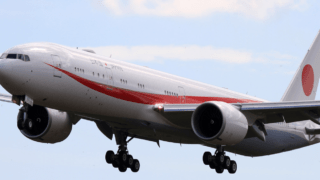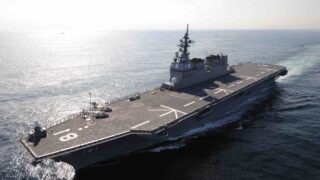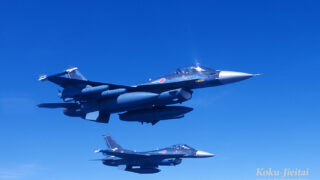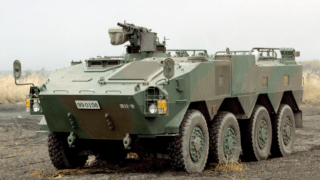Failure Of 1-Go Class
Despite being small, missile boats pack quite a punch and are capable of fatally damaging larger vessels as demonstrated in the 1967 sinking of the Israeli destroyer Eilat.
As an alternative to torpedo boats, these cost effective weapons are used by navies who cannot afford large military assets, but the fast ships have proven to be instrumental in many areas such as reconnaissance, coastal patrols, and transporting special forces.
Witnessing the growing accuracy and reliability of anti-ship missiles, Japan belatedly introduced missile boats in the 1990s, but the first batch turned out to be a failure resulting in just three procurements.
The “1-Go Class” or Type 1 Missile Boat could perform a maximum speed of 46 knots (85km/h or 52.8mph) due to the hydrofoil propulsion system, but the hull was deemed insufficient to withstand the harsh conditions in the Sea of Japan.
Next came the “Hayabusa-class” which was much more larger and built upon the lessons learned from the predecessor’s defects.
Fast, Stealthy And Powerful
- General Overview
| Displacement | 200 tons (standard) |
| Length | 50.1m (164.4ft) |
| Beam | 8.4m (27.6ft) |
| Crew | 21 people |
| Speed | 44 knots (81km/h, 50.3mph) |
| Armament | 76mm Naval Gun×1 Type 90 Anti-Ship Missile×3〜4 |
| Unit Price | 90 million USD |
Weighing over 200 tons, the incorporation of aluminum alloy to the hull and the transition to water-jet propulsion has enabled the Hayabusa-class to perform a stable, but speedy cruising under rough weather conditions.
From a design standpoint, the ship adopted stealth masts, gun shields and even stealthy handrails in an effort to diminish radar reflection.
Owing to the ship’s enlargement, the Hayabusa-class has been upgraded with several notable features such as the Combat Information Center (CIC), a small dining hall, and a kitchen.
With these features, the missile boat can operate up to 2〜3 days, but the kitchen only hosts minimum appliances including a microwave oven, IH cooking stove, and refrigerator. So, the menu is mostly limited to ready-to-eat meals or frozen food.
 Anti-ship missiles on the rear and three water-jet engines at the bottom
Anti-ship missiles on the rear and three water-jet engines at the bottom
The main armament would be the three to four missile tubes on the rear-side of the boat, each containing a Type 90 Anti-ship Missile with an estimated range of 150km/93miles.
The boat is also equipped with a 76mm naval gun and two 12.7mm heavy machine guns for close range combat. Along with the 44-knot sailing speed, these secondary weapons are intended to counter small, fast-moving opponents such as smugglers, poachers, and foreign agents.
This requirement was especially stressed after the pursuit of North Korean infiltration ships in 1999 and 2001.
 Useful in coastal patrol and pursuit activities
Useful in coastal patrol and pursuit activities
Perhaps this pursuit capability is the primary reason why all six missile boats are still in service. With North Korean ships suspected of smuggling illegal goods and covert operatives near Japan’s coast, fast patrol boats are needed to counter such threats.
Replaced By New Patrol Vessels
Although the Hayabusa-class remains quite useful, missile boats in general are caught in a downward trend worldwide due to the proliferation of anti-ship missiles to other launch platforms.
Since missile ships are no longer unique in its ability of delivering a salvo of anti-ship warheads, the Hayabusa-class is expected to be decommissioned by 2032.
Its role will be inherited by the multi-purpose “Mogami-class” frigates and the new 1,900-ton class patrol vessels. JMSDF’s shift towards cost-efficient and labor-saving assets have led to the introduction of multi-functional vessels, with specialized equipment like missile boats being rendered obsolete.





















Comments